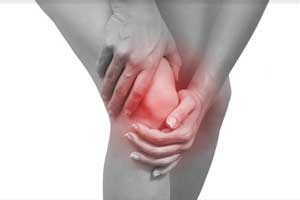- Home
- Editorial
- News
- Practice Guidelines
- Anesthesiology Guidelines
- Cancer Guidelines
- Cardiac Sciences Guidelines
- Critical Care Guidelines
- Dentistry Guidelines
- Dermatology Guidelines
- Diabetes and Endo Guidelines
- Diagnostics Guidelines
- ENT Guidelines
- Featured Practice Guidelines
- Gastroenterology Guidelines
- Geriatrics Guidelines
- Medicine Guidelines
- Nephrology Guidelines
- Neurosciences Guidelines
- Obs and Gynae Guidelines
- Ophthalmology Guidelines
- Orthopaedics Guidelines
- Paediatrics Guidelines
- Psychiatry Guidelines
- Pulmonology Guidelines
- Radiology Guidelines
- Surgery Guidelines
- Urology Guidelines
Can a Knee Replacement last a lifetime?

Like any other field of medicine, there are advancements in the field of hip and knee transplant surgery. This is a requirement of the present time to develop technology by which the replaced joints last for a longer period especially when many patients are coming for joint replacement at a younger age.
Robotic surgery, cementless implant among advances that could lead to longer-lasting knee replacement.
The first advancement is that there is increasing use of the robotic-assisted system in Knee and hip transplant. The extreme accuracy provided by the robotic-assisted system could potentially improve the longevity of a knee or hip replacement. This is an important consideration, especially for younger patients," says Dr Westrich. "Studies have shown that optimal alignment and positioning of the implant are critical for the long term success of a joint replacement.”
Another major advance is a cementless knee replacement in which cement is no longer needed to attach the implant to the bone.
“This, we feel, may also lead to a joint replacement that lasts longer and may not require revision surgery in the future,” Dr Westrich said. “The cementless knee replacement, which is FDA-approved for use with a robotic system, combines two of the most recent knee replacement advancements into one high tech procedure that aims to benefit patients.”
The length of time a joint replacement will last is an important consideration, especially for younger patients in their 40s or 50. The standard knee implant used in joint replacement usually lasts a long time – generally 15 to 20 years – but it doesn’t last indefinitely. When the implant wears out or loosens, patients generally need a second knee replacement, known as revision surgery. Dr Westrich believes the cementless knee replacement implanted with robotic-assisted surgery could change that. “The combination of these two major technological advances has dramatically changed the way I do knee replacements,” said Dr Westrich.
Statistics show that increasing numbers of younger people are having a joint replacement because they don’t want arthritic pain to slow them down. Once they have a knee replacement, these active patients generally put more demands on their joint, causing more wear and tear, according to Dr Westrich. With a conventional cemented prosthesis, chances are they’ll need another surgery down the road. This often has to do with the loosening of the implant from the bone, much like a cemented crown on a tooth.
In a standard knee replacement, the components of the implant are secured in the joint using bone cement. It’s a tried and true technique that has worked well for decades. But eventually, over time, the cement starts to loosen from the bone and/or the prosthesis. “With the new cementless prosthesis, the components are press-fit into place for ‘biologic fixation,’ which basically means that the bone will grow into the implant,” Dr Westrich explains. “In addition, more accurate positioning of the implant is critical, and robotic-guidance allows for pinpoint accuracy.”
With biologic fixation, many joint replacement specialists believe that loosening over time could be less likely. “A total knee replacement could potentially last much longer, even for a patient’s lifetime,” Dr Westrich says.
“Cementless implants have been used in total hip replacement surgery for many years and essentially replaced cemented implants for the same reason. Because of the knee’s particular anatomy, it has been much more challenging to develop a cementless prosthesis that would work well in the knee,” he explains. “Now I believe the time has come. Major advances in design, technology and biomaterials have paved the way for a viable cementless knee implant.”
Candidates for the cementless procedure are generally patients under 70 with good bone quality to promote biological fixation. In addition to younger patients, the cementless implant may also prove to be a good option for patients with excess weight who tend to put more stress on their joint replacement, sometimes causing the cement to loosen prematurely. Studies are underway to see how patients with cementless knee replacements do over the long term.

Disclaimer: This site is primarily intended for healthcare professionals. Any content/information on this website does not replace the advice of medical and/or health professionals and should not be construed as medical/diagnostic advice/endorsement or prescription. Use of this site is subject to our terms of use, privacy policy, advertisement policy. © 2020 Minerva Medical Treatment Pvt Ltd